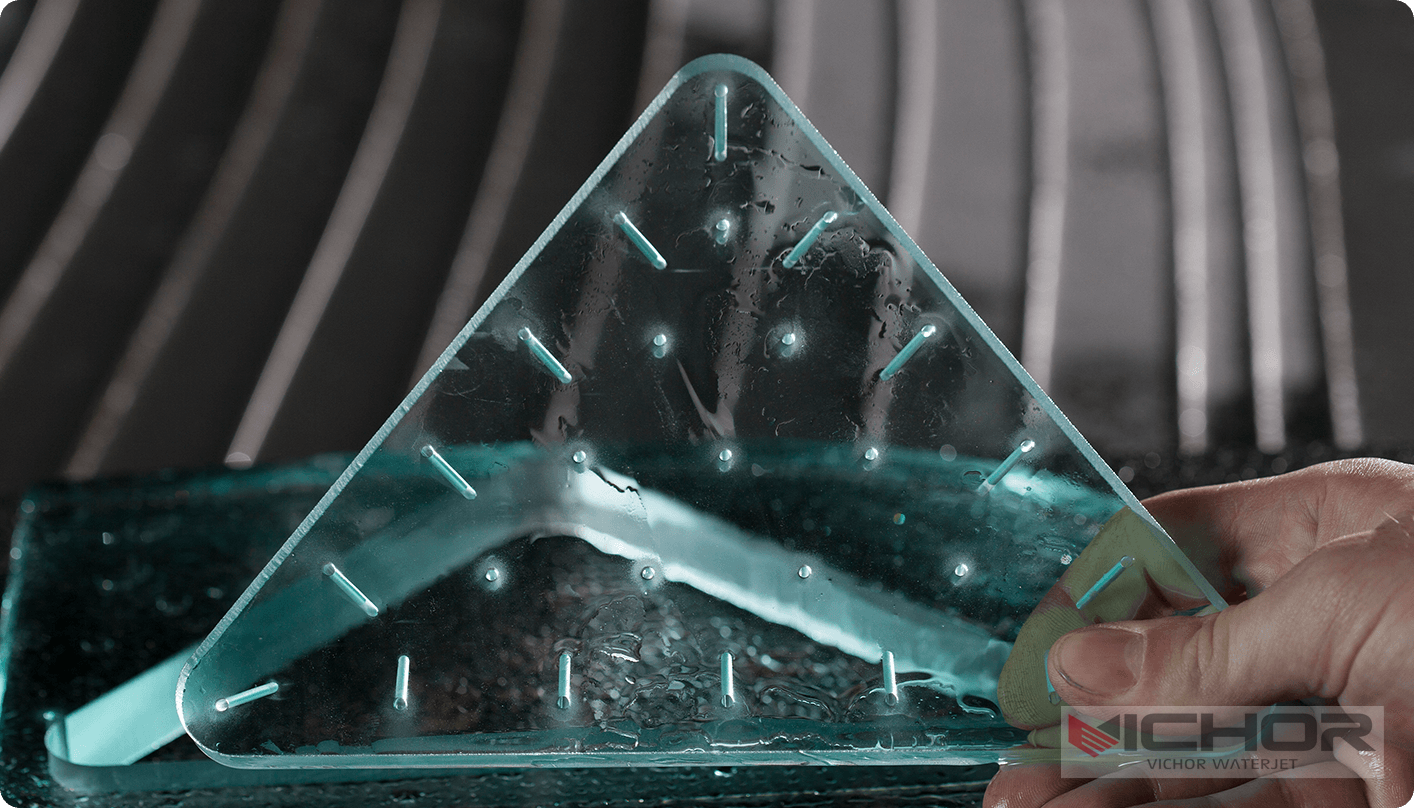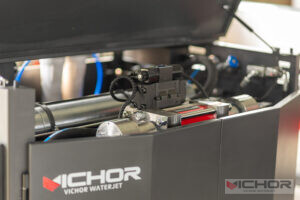
Pure Waterjet: The Ultimate Guide to Clean, Precision Cutting in 2025
In the world of industrial cutting and fabrication, the quest for efficiency, precision, and environmental responsibility has led to the rise of innovative technologies. Among these, pure waterjet stands out as a game-changer. If you’ve ever wondered how to achieve intricate cuts without heat damage or environmental harm, you’re in the right place. This comprehensive guide dives deep into pure waterjet technology, exploring its benefits, applications, costs, and more. Whether you’re a manufacturer, engineer, or hobbyist, understanding pure waterjet can transform your projects. Let’s explore why this method is gaining traction and how it compares to traditional techniques.
What is Pure Waterjet Cutting?
Pure waterjet cutting is a advanced manufacturing process that uses a high-pressure stream of water, typically pressurized up to 60,000 PSI or more, to cut through various materials. Unlike abrasive waterjet systems, which add garnet or other abrasives to the water stream, pure waterjet relies solely on water, making it ideal for softer materials. The process involves pumping water through a tiny nozzle, creating a focused jet that slices with remarkable accuracy. This method is celebrated for its cleanliness and versatility, as it produces no heat-affected zones (HAZ), minimizing material distortion. The pure waterjet approach is especially popular in industries where delicate materials are involved, such as food processing or electronics, because it avoids contamination and preserves material integrity. By leveraging pure waterjet technology, businesses can achieve precise cuts while reducing waste and environmental impact.
Pure Waterjet vs. Other Cutting Methods: A Detailed Comparison
When evaluating cutting technologies, it’s essential to compare pure waterjet with alternatives like laser cutting, plasma cutting, and abrasive waterjet. Each method has its strengths, but pure waterjet offers unique advantages in specific scenarios. For instance, laser cutting excels with metals but generates heat that can damage sensitive materials, whereas pure waterjet operates cold, preventing thermal stress. Similarly, plasma cutting is fast for thick metals but lacks the finesse for intricate designs that pure waterjet provides. In contrast to abrasive waterjet, which is suited for hard materials like steel, pure waterjet is more cost-effective for soft materials like foam, rubber, or plastics, as it doesn’t require abrasive consumables. This makes pure waterjet a sustainable choice, reducing operational costs and environmental footprint. Moreover, pure waterjet systems are known for their versatility—they can handle a wide range of thicknesses without tool changes, unlike mechanical methods. Overall, if you prioritize eco-friendliness, precision, and material flexibility, pure waterjet often emerges as the superior option.
Applications of Pure Waterjet Technology Across Industries
The adaptability of pure waterjet technology has led to its adoption in diverse sectors. In the aerospace industry, for example, pure waterjet is used to cut composite materials and insulation foams without compromising structural integrity. The automotive sector relies on it for shaping gaskets, carpets, and interior components, thanks to its ability to produce clean edges without fraying. In food processing, pure waterjet systems slice fruits, vegetables, and baked goods hygienically, as the water-only approach avoids contamination risks. Additionally, the electronics industry employs pure waterjet for precision cutting of circuit boards and delicate components, where heat-free operation is critical. Even in artistic and architectural fields, pure waterjet enables the creation of intricate designs in materials like stone or glass. By integrating pure waterjet into their workflows, companies enhance productivity while maintaining high quality standards. This broad applicability underscores why pure waterjet is a valuable asset in modern manufacturing.
How to Choose the Right Pure Waterjet System for Your Needs
Selecting the appropriate pure waterjet system can be daunting, but considering key factors can simplify the process. First, assess your material types: if you primarily work with soft materials like foam, rubber, or food products, a pure waterjet system is ideal, whereas harder materials might require an abrasive variant. Next, evaluate the required precision and cut quality—pure waterjet excels in applications demanding fine details and smooth edges. Also, consider the production volume; high-throughput environments may benefit from automated pure waterjet setups with multi-head capabilities. Budget is another critical aspect; while pure waterjet systems generally have lower operating costs due to no abrasive needs, initial investment can vary based on pressure levels and features. Look for suppliers who offer demonstrations and support, ensuring the system integrates seamlessly with your operations. Lastly, factor in maintenance requirements—pure waterjet systems typically need regular pump checks and nozzle replacements to sustain performance. By carefully weighing these elements, you can invest in a pure waterjet solution that maximizes efficiency and ROI.
Finding Reliable Pure Waterjet Services and Suppliers
If purchasing a pure waterjet system isn’t feasible, outsourcing to specialized services is a practical alternative. To find reputable pure waterjet providers, start by researching online directories and industry forums that highlight companies with proven expertise. Look for suppliers who emphasize quality control and have certifications, such as ISO standards, which indicate adherence to industry benchmarks. When evaluating pure waterjet services, request samples of their work to verify cut accuracy and material handling. It’s also wise to compare multiple quotes, but don’t just focus on price—consider factors like turnaround time, customer support, and flexibility for custom projects. Networking at trade shows or webinars focused on waterjet technology can connect you with trusted pure waterjet experts. Additionally, read client testimonials to gauge reliability; a supplier with positive feedback in handling diverse materials is likely a safe bet. By taking these steps, you can partner with a pure waterjet service that delivers consistent results and supports your business goals.
Cost and Pricing Factors for Pure Waterjet Cutting
Understanding the economics of pure waterjet cutting is crucial for budgeting and decision-making. The cost of pure waterjet services or systems depends on several variables. For instance, operating a pure waterjet machine involves expenses like electricity, water consumption, and maintenance, but it avoids the high costs associated with abrasives, making it more affordable for soft materials. Initial investment in a pure waterjet system can range from $50,000 to over $200,000, influenced by factors such as pump pressure, table size, and automation features. When outsourcing, pricing often bases on cut complexity, material type, and volume—simple jobs on thin materials might cost as little as $50 per hour, while intricate designs could exceed $150 per hour. Compared to other methods, pure waterjet can be cost-effective due to reduced waste and longer tool life. To optimize expenses, consider batch processing and material nesting, which maximize efficiency. Overall, pure waterjet offers a compelling value proposition, especially for businesses focused on sustainability and precision.
$200,000, influenced by factors such as pump pressure, table size, and automation features. When outsourcing, pricing often bases on cut complexity, material type, and volume—simple jobs on thin materials might cost as little as $50 per hour, while intricate designs could exceed $150 per hour. Compared to other methods, pure waterjet can be cost-effective due to reduced waste and longer tool life. To optimize expenses, consider batch processing and material nesting, which maximize efficiency. Overall, pure waterjet offers a compelling value proposition, especially for businesses focused on sustainability and precision.
In-Depth Look at Pure Waterjet Technology and Process
Delving into the technical aspects of pure waterjet reveals why it’s such a precise and efficient method. The process begins with a high-pressure pump, often an intensifier or direct-drive system, that pressurizes water to extreme levels. This water is then forced through a small orifice, typically made of sapphire or diamond, creating a supersonic jet that can reach speeds over 2,500 feet per second. The pure waterjet stream is focused and controlled by CNC systems, allowing for complex patterns and tight tolerances as fine as 0.001 inches. One key advantage is the absence of heat generation, which preserves material properties and eliminates the need for post-processing in many cases. The technology also incorporates filtration systems to ensure water purity, critical for maintaining consistent cut quality. Over the years, advancements in pure waterjet have introduced features like dynamic waterjet head control, which adjusts the stream angle to reduce taper and improve edge quality. By mastering these elements, operators can leverage pure waterjet for high-performance applications, from prototyping to mass production.
Frequently Asked Questions (FAQs)
Q1: What materials can be cut using pure waterjet?
A1: Pure waterjet is ideal for cutting soft materials such as foam, rubber, plastics, paper, food products, and certain composites. It may not be suitable for hard metals or ceramics without switching to an abrasive waterjet system.
Q2: How does pure waterjet compare to laser cutting in terms of precision?
A2: Both methods offer high precision, but pure waterjet excels in applications requiring no heat input, preventing material warping or burning. Laser cutting might be faster for some metals, but pure waterjet provides cleaner edges on heat-sensitive materials.
Q3: What are the environmental benefits of using pure waterjet?
A3: Pure waterjet is environmentally friendly because it uses only water, reducing waste and avoiding chemical or abrasive residues. It also consumes less energy compared to thermal cutting methods and supports recycling of water in closed-loop systems.
Q4: How much maintenance does a pure waterjet system require?
A4: Regular maintenance for a pure waterjet system includes checking pumps, replacing nozzles and seals, and filtering water to prevent clogs. With proper care, these systems can have long lifespans and minimal downtime.
Q5: Can pure waterjet be used for 3D cutting or complex shapes?
A5: Yes, pure waterjet technology, especially when integrated with advanced CNC controls, can handle 3D cutting and intricate shapes with high accuracy, making it versatile for artistic and industrial designs.
Q6: What is the typical operating cost for a pure waterjet machine?
A6: Operating costs vary but generally include electricity, water, and maintenance, averaging $10-$30 per hour for pure waterjet systems. This is often lower than abrasive waterjet due to the elimination of abrasive expenses.
Q7: How do I find a trustworthy pure waterjet service provider?
A7: Look for providers with industry certifications, positive customer reviews, and a portfolio of past projects. Requesting samples and comparing quotes can help you identify a reliable pure waterjet partner.
Q8: Is pure waterjet safe to operate?
A8: When operated with proper safety protocols, such as protective enclosures and training, pure waterjet systems are safe. The high-pressure water stream requires caution, but it poses no fire or fume risks unlike thermal methods.
In conclusion, pure waterjet technology represents a significant advancement in cutting solutions, offering unmatched precision, environmental benefits, and versatility. Whether you’re investing in a system or leveraging services, understanding its nuances can drive efficiency and innovation in your projects. As industries continue to prioritize sustainability and quality, pure waterjet is poised to play a pivotal role in shaping the future of manufacturing.
continue reading



